While it might seem counter intuitive foraging is excellent for us even though in many places February is the worst winter month. Among the flowering trees you can spot locally are the Eastern Redbud and the Chickasaw Plum.
The Eastern Redbud is a native, an understory tree, and an ornamental. You should be looking around parks for a medium-sized tree with no leaves but loaded with small pink blossoms. The blossom size is important. There is a West Indian ornamental used in landscaping, Tabebuia heterophylla. It does not have edible parts yet this time of year it, too, has pink blossoms and no leaves. However the Redbud’s blossoms are about the size of your fingernail. T. heterophylla blossoms are much larger, two to three inches across and three inches long. Its wood is quite valuable and various folk remedies have been made from the bark, leaves and fruit. T. heterophylla blossom, however, are not edible. The Redbud’s blossom have a nice pea flavor. Its young leaves and pods are edible as well.
Other trees that are easy to spot this time of year are wild plums. They, too, are in blossom and have no leaves. This time the blossoms are white. What is nice about the wild plums now is they are easy to locate so you can visit them later in the year. One problem locally is whether the shrub is a Chickasaw Plum — very edible — or a Flatwood Plum, perhaps edible if drowned in a lot of sugar. Fortunately the Flatwood Plum’s leave are flat. The Chickasaw Plum’s leaves curl up like little canoes. Think: Chickasaw Indians, canoes, curled leaves. The fruit ripens around mid-May give or take a few weeks depending on the weather. Very sweet and delicious. Incidentally the most important factor whether they have plums or not is whether the bees can fly on the days the tree’s flowers need pollinating. If it is too wet or cold, no or little fruit.
Hard to miss this time of year along the road and in nearby fields are Wild Radishes and Wild Mustards. While there are no geographical restrictions you usually finds one or the other, not too often both at the same time. If I am in the Ocala/Gainesville area I see Wild Radishes. If I am on the other end of the state near Lake Okeechobee I see Wild Mustards. But I can also find small pockets of each locally as well. They are used the same way and resemble each other. Mustards tend to be tall with most of their blossoms on the top end. Radishes tend to twist and turn and have their blossoms distributed along the stem. There are other smaller identifying characteristics as well. Both are in blossom now for several hundred miles. If you see deep green plants with yellow (or white blossoms) now beside the road it is probably one or the other.
Earthskills 2016 is now history. My thanks to the organizers for inviting me again this year and too all those who attended any of my four classes. There were plenty of wild edibles to see, many in abundance including Chickweed, Pellitory, Stinging Nettles, False Hawk’s Beard, Oxalises and true thistles. Next up is the 2016 Florida Herbal Conference this weekend which I believe is sold out. I will be holding three classes, early and late Saturday and early Sunday. This year the event is in Lake Wales and features Paul Stamets one of the world’s foremost authorities on mushrooms and their uses.
Upcoming Foraging Classes:
Sunday, March 6th, Florida State College, south campus, 11901 Beach Blvd., Jacksonville, 9 a.m.
Sunday, March 13th, 9 a.m, Orlando area, exact site to be announced. Mead Garden had a policy change which requires a change in location.
Saturday, March 19, Colby-Alderman Park: 1099 Massachusetts Street, Cassadaga, 9 a.m.
Saturday, March 26th, Dreher Park, 1200 Southern Blvd., West Palm Beach, 9 a.m.
Sunday, April 3rd, John Chestnut County Park: 2200 East Lake Road, Palm Harbor, FL, 9 a.m.
Sunday, April 10th, Wekiva State Park, 1800 Wekiwa Circle, Apopka, Florida 32712. 9 a.m.
Sunday, April 17th, Bayshore Live Oak Park, 2200 East Lake Road, Port Charlotte, FL. 9 a.m.
Sunday, April 24th, Wickham Park: 2500 Parkway Drive, Melbourne, FL 9 a.m.
Scores of you have taken the advantage of getting some nearly free mustards seeds from me. I have about half a pound left. As some of you know I am also a gardener. I ordered a few mustard seeds. Somewhere between the ordering and the shipping I ended up with a pound of Osaka Purple Mustard seeds. I have thousands of mustard seeds when I wanted about 30. Thus I have been giving them away in classes and the mail so they will not go to waste. If you want some to grow send me a self-addressed stamped envelope and I will send you some seeds. They will be mailed affixed to tape in a coin envelope so to not exceed a first-class envelope in weight and thickness. The seeds rub off the tape easily. Mail the SASE to Green Deane, POB 941793, Maitland FL. 32794
All of Green Deane’s videos are available for free on You Tube. They do have ads on them so every time you watch a Green Deane video I get a quarter of one cent. Four views, one cent. Not exactly a large money-maker but it helps pays for the newsletter. If you want to see the videos without ads and some in lightly better quality you can order the DVD set. It is nine DVDs with 15 videos on each. Many people want their own copy of the videos or they have a slow service and its easier to order then to watch them on-line. They make a good gift for that forager you know. Individual videos can also be ordered. You can order them by clicking on the button on the top right of this page or you can go here.
Want to identify a plant? Perhaps you’re looking for a foraging reference? You might have a UFO, an Unidentified Flowering Object you want identified. On the Green Deane Forum we — including Green Deane and others from around the world — chat about foraging all year. And it’s not just about warm-weather plants or just North American flora. Many nations share common weeds so there’s a lot to talk about, such as the one to the left. There’s also more than weeds. The reference section has information for foraging around the world. There are also articles on food preservation, and forgotten skills from making bows to fermenting food. Recent topics include: Roadside Viola? Wild Blueberry blossoms? Red Berries. Huge Thorns on Leaves. How Could An Infant Be Fed By Foraging? Antiseptic and Antihistamine. Gourmet Foraging. Conyza and Chlorophyll. Can Anyone Tell Me The Name of This Plant? NJ Biennial. Crepis Japonica Nutritional Information, and So Much Free Food! You can join the forum by clicking on the button on the upper right hand side of this page.
This is weekly issue 197.
If you would like to donate to Eat The Weeds please click here.

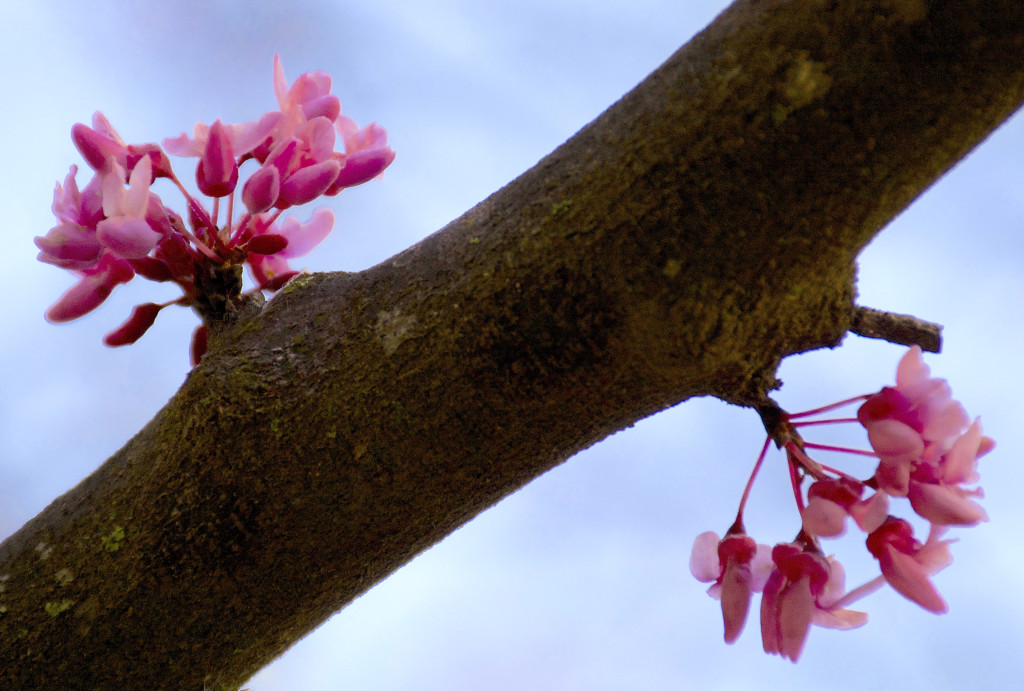
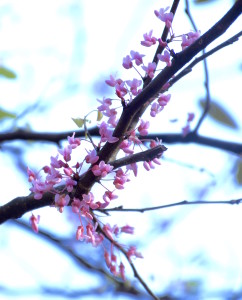
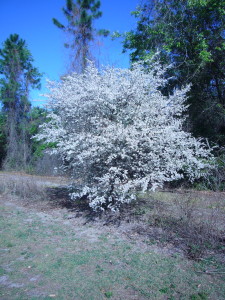
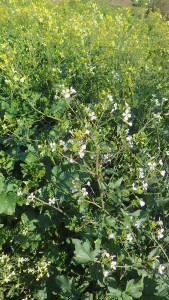
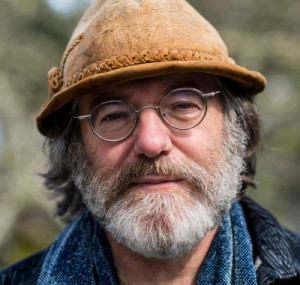
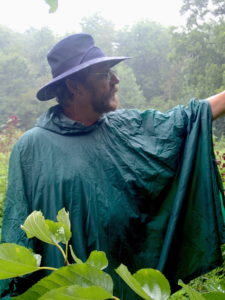
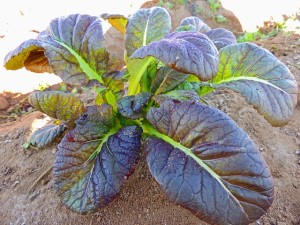
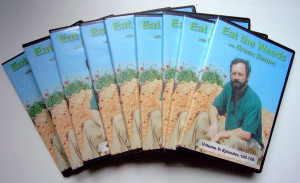


I am curious about anyone’s experience with sweetgum gumball trees and the chemicals used to minimize the production of gumballs. Indole–3-butyric acid is sold at a relatively high price to place strategically in the tree trunk or to be sprayed. However I see the same compound sold as growth hormone in powder form for a significantly lower price. If one were to study application (and timing is crucial), with some prudence, why could one not save money, purchase the chemical in powder form, and apply it in a similar fashion as the pre formulated mixture?
I received my mustard seed . And will share w/my daughter. Thank you so much. Would you like some Roselle seeds? If so send me an email . Makes a wonderful healthy tea. I am not a fan of the jam. I drink the tea hot in the winter w/ginger root , cinnamon and some cayenne pepper,since I like to feel the heat. I drink it cold in the summer made the same way. Have also made wine which is a beautiful red color great for Christmas.
k
Thank you but no. I have a Roselle in my back yard.
First I wish you more success in your coming certainly useful well planned programms. I’ve gained a lot from ” Eattheweeds ” . At least a forager should be endowed with a high degree of the power of observation eg. Utilizing the observation of bees flying among my lemon tree leaves has been a good indication for me that my tree has blossomed for the first time since five years have passed.
I wish you more success in your coming certainly well planned and useful programs. I’m always making use of “ Eattheweeds “ eg. In this issue I’ve utilised the observation of flying bees as an indication of pollination – not only that; but for the appearance of flowers itself because for the first time since five years of growth of my lemon tree I’ve come to know of blossoming of the tree despite my follow up every morning.
Mr. Deane: Thank you for your work in educating us to the natural welth we have around us in the world. I am consumed in forageing and hurbs. I turn to you as my know all. But I’m forlorned in that I have to be close to a computer to resurch your work. Would you please write a field manual we can cary with us . Thank you very much . Caveman